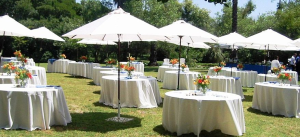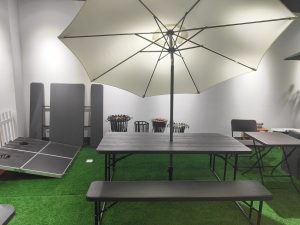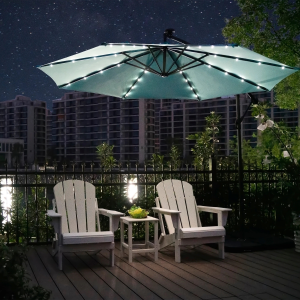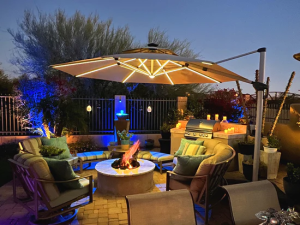More
Umbrella Fabrics and Materials: A Comprehensive Guide to Durability, UV Protection, and Resistance to Fading and Mold
Umbrella Fabrics and Materials: A Comprehensive Guide to Durability, UV Protection, and Resistance to Fading and Mold
Introduction:
When choosing a patio umbrella, one of the most crucial factors to consider is the fabric or material used for the canopy. The right umbrella fabric not only adds aesthetic appeal but also determines its durability, ability to protect against UV rays, and resistance to fading and mold. In this blog post, we will explore the various types of umbrella fabrics and materials available, such as acrylic, polyester, and Olefin, and discuss their unique characteristics to help you make an informed decision when selecting the perfect umbrella for your outdoor space.
Acrylic Fabric:
Acrylic fabric is a popular choice for patio umbrellas due to its excellent durability and colorfastness. It is highly resistant to fading, even under prolonged exposure to sunlight. Acrylic fabrics are also known for their ability to withstand various weather conditions without deteriorating. They provide reliable UV protection, often offering a UPF (Ultraviolet Protection Factor) of 50+, shielding you and your guests from harmful UV rays. Additionally, acrylic fabrics are resistant to mold and mildew, making them ideal for areas with high humidity or frequent rain.
Polyester Fabric:
Polyester is another commonly used material for umbrella canopies. It offers good durability and is relatively affordable compared to other fabrics. Polyester fabrics are often treated with coatings or finishes to enhance their UV resistance, but their level of protection may vary. They are generally fade-resistant and hold their color well over time. However, polyester may not be as resistant to mold and mildew as other fabrics. Regular cleaning and proper maintenance are essential to prevent the growth of mold or mildew on polyester umbrellas.
Olefin Fabric:
Olefin, also known as polypropylene, is a synthetic fabric that is becoming increasingly popular for outdoor applications. It is highly durable, resistant to tearing and abrasion, and offers excellent colorfastness. Olefin fabrics are known for their UV resistance and can provide reliable sun protection with a UPF of 50+. They also have good resistance to fading and are relatively easy to clean. While Olefin fabrics are generally resistant to mold and mildew, it is still important to maintain proper care and cleanliness to prevent any potential growth.
Other Considerations:
In addition to the fabric type, consider other factors that contribute to the overall performance of an umbrella, such as the fabric weight and density. Heavier fabrics tend to be more durable and less likely to tear or fray, while a higher density can provide better UV protection. It’s also worth noting that some umbrella manufacturers may use blends of different fabrics or incorporate additional treatments to enhance specific properties like water repellency or stain resistance. These factors can further influence the fabric’s durability and performance.
Conclusion:
Choosing the right fabric or material for your patio umbrella is essential for long-lasting performance, UV protection, and resistance to fading and mold. Acrylic fabrics are known for their exceptional durability, fade resistance, UV protection capabilities, and resistance to mold. Polyester fabrics offer affordability, decent durability, and fade resistance but may require more maintenance to prevent mold growth. Olefin fabrics provide excellent durability, UV resistance, and colorfastness while maintaining resistance to mold and mildew. Consider your specific needs, budget, and aesthetic preferences when selecting the umbrella fabric that best suits your outdoor space. By understanding the characteristics of different fabrics and materials, you can make an informed decision and enjoy a reliable and stylish patio umbrella that will provide years of comfort and protection.











